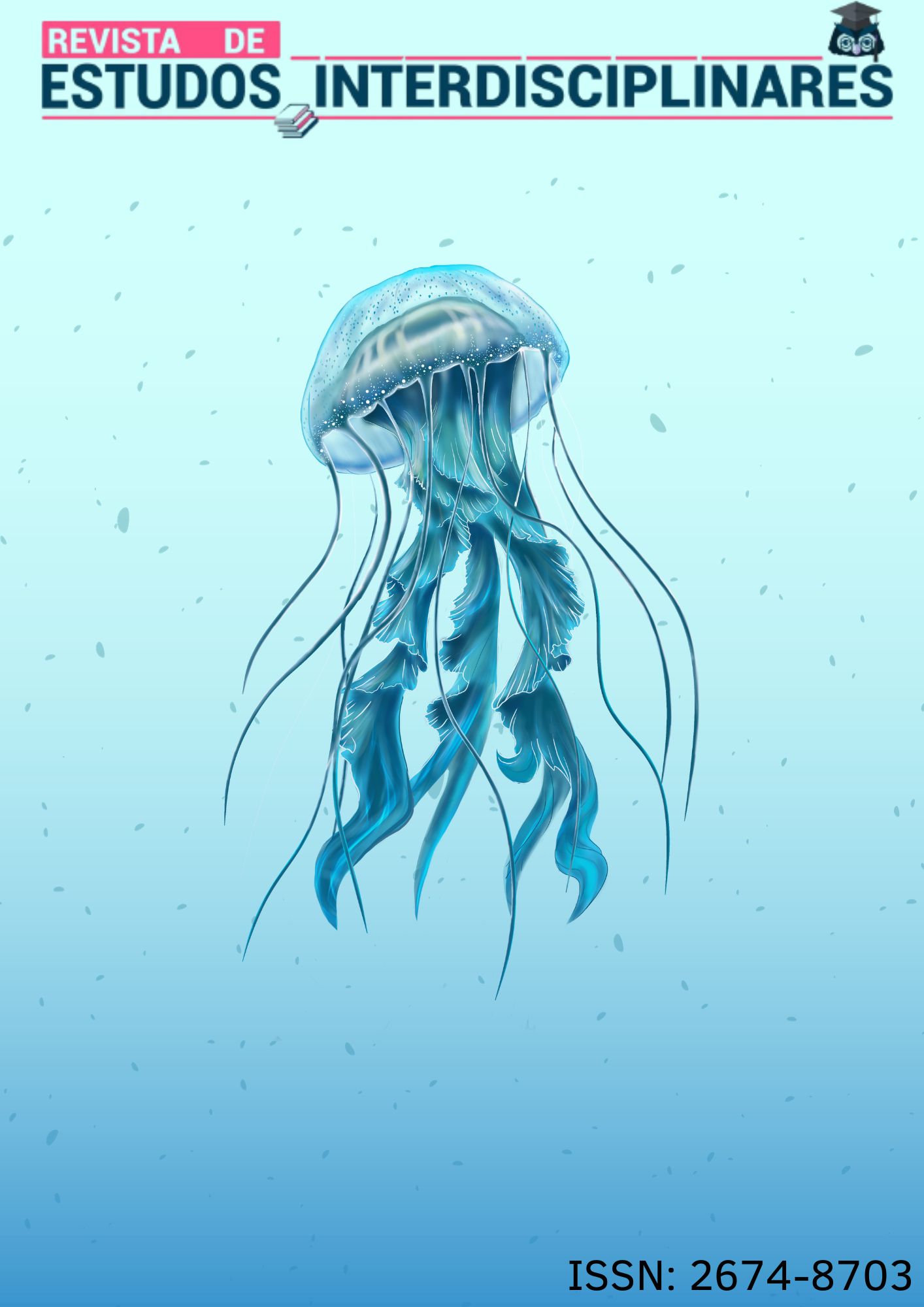METABOLIC PROCESS AND THE IMMUNOLOGICAL FUNCTION OF GLUTAMINE IN YOUNG ATHLETES
Visualizações: 289DOI:
https://doi.org/10.56579/rei.v5i6.456Keywords:
Glutamine, Immune Function, Immune impairmentAbstract
This article aims to analyze the relationship between glutamine supplementation and the impairment of the immune system of young athletes, seeking to understand the extent to which glutamine deficiency influences the impairment of the immune system and increased susceptibility to infections in young people. This is a bibliographic review based on a qualitative survey of data whose question leading the research was the metabolic process of glutamine and its potentializing function of the immune system of young athletes. It is perceived the need, during catabolic/hypercatabolic circumstances, due to the physical effort perceived by young athletes, to have the appropriate supplementation of this amino acid, as its demand increases dramatically, leading to a deprivation of glutamine and a serious impairment of function of these athletes. It emerged from the research carried out that immune cells depend largely on the availability of this amino acid to survive, proliferate and function in the protection of our organism against pathogens.
Downloads
References
AMERICAN ACADEMY OF PEDIATRICS. Comitê de Medicina Esportiva e Fitness e Comitê de Saúde Escolar. (2009). Organized sports for children and preadolescents. Pediatrics, 107, 1.459-1.462.
AUCOUTURIER J, et al. Metabolismo de gorduras e carboidratos durante o exercício submáximo em crianças. Sports Medicine. v.38, n.3, 213–238, 2013. DOI: https://doi.org/10.2165/00007256-200838030-00003
BASS S, INGE K. (2009). Nutrition for special populations: children and young athletes. In Clinical Sports Nutrition (edited by L. Burke and V. Deakin) 589-632. Sydney: McGraw-Hill
BASSIT RA, et. al. (2012). Branched-chain amino acid supplementation and immune response in long-distance athletes. Nutrition Magazine, 18, 376–379. DOI: https://doi.org/10.1016/S0899-9007(02)00753-0
CALDER PC, YAQOOB P. Glutamina e sistema imunológico. Amino Acids 2012, 17, 227–241. [CrossRef] [PubMed] DOI: https://doi.org/10.1007/BF01366922
CRUZAT VF, et. al. Oral supplements with free and dipeptide forms of l-glutamine: effects on the muscle glutamine-glutathione axis and on heat shock proteins. J. Nutr. Biochem. 2014, v.2, n.25, 345–352. DOI: https://doi.org/10.1016/j.jnutbio.2013.11.009
CURI R, et al. Molecular mechanisms of glutamine action. J. Cell. Physiol. 2016, 204, 392–401. [CrossRef] [PubMed] DOI: https://doi.org/10.1002/jcp.20339
CURI R, et al. Regulatory principles in metabolismo - then and now. Biochem. J. 2012, 473,1.845–1.857. [CrossRef] [PubMed]
FROILAND K, et al. Use of nutritional supplements among university athletes and their sources of information. International Journal of Sport Nutrition and Exercise Metabolism. v.14, n.1, 104–120, 2014. DOI: https://doi.org/10.1123/ijsnem.14.1.104
GRIFITHS RD, et al. (2010) Total parenteral nutrition of glutamine and responses to infections acquired in intensive care. Clinical Nutrition 19, 42 (abstract 172).
GROHMANN U, et al. Pathways of detection and degradation of amino acids in immune regulation. Cytokine Growth Factor Rev. 2017, v.1, n. 35, 37–45. DOI: https://doi.org/10.1016/j.cytogfr.2017.05.004
HARRELL JS, et al. Energy costs of physical activities in children and adolescents. Medicine and Science in Sports and Exercise, vol.37, nº 2, 329–336, 2005. DOI: https://doi.org/10.1249/01.MSS.0000153115.33762.3F
JAYANTHI NA et al. Risks of training and specialization in elite junior tennis players. J Med Sci Tennis. 2011; 16(1):14-20.
KREBS HA. Amino acid metabolism: the synthesis of glutamine from glutamic acid and ammonia and the enzymatic hydrolysis of glutamine in animal tissues. Biochem. J. 1935, 29, 1.951–1.969. [CrossRef] [PubMed]
LAGRANHA CJ, et al. Glutamine supplementation prevents exercise-induced neutrophil apoptosis and reduces the phosphorylation of p38 mapk and jnk and the expression of p53 and caspase 3. Cell Biochem. Funct. 2007, 25, 563–569. [CrossRef] [PubMed] DOI: https://doi.org/10.1002/cbf.1421
MALINA RM, et al. Human Kinetics of Growth, Maturation and Physical Activity. Champaign, Ill, USA, 2ndedition, 2014.
MURPHY C, NEWSHOLME P. (2008) Importance of glutamine metabolism in murine macrophages and human monocytes in the L-arginine biosynthesis and rates of nitrite or urea production. Clin Sci 89, 397–407. DOI: https://doi.org/10.1042/cs0950397
NEWSHOLME P. (2011) Why is L-glutamine metabolism important for immune cells in health, post-injury, surgery or infection? J Nutr 131, 2515S–2522S. DOI: https://doi.org/10.1093/jn/131.9.2515S
NEWSHOLME P, et al. Metabolism of glucose, glutamine, long-chain fatty-acids and ketone-bodies by murine macrophages. Biochem. J. 2012, 239, 121–125. [CrossRef] [PubMed] DOI: https://doi.org/10.1042/bj2390121
OUDEMANS-VAN STRAATEN HM, et al. Depleção de glutamina no plasma e resultado do paciente em admissões agudas na UTI. Intensiv. Care Med. 2011, 27, 84–90. [CrossRef] DOI: https://doi.org/10.1007/s001340000703
RODRIGUEZ NR, et al. Posição e suporte da Escola Americana de Esportes e Medicina. Nutrição e desempenho atlético. Medicine & Science in Sports & Exercise, v. 41 n3, 709–731, 2009. DOI: https://doi.org/10.1249/MSS.0b013e31890eb86
SEEFELDT V, et al. Overview of Youth Sports Programs in the United States. Washington, DC: Carnegie Council on Adolescent Development; 2009, 335–339.
WIERSMA LD. Riscos e benefícios da especialização em esportes para jovens: perspectivas e recomendações. Pediatr Exerc Sci. 2010; 12:13-22. DOI: https://doi.org/10.1123/pes.12.1.13
WILMORE DW, SHABERT JK. Papel da glutamina nas respostas imunológicas. Nutrition, 2011, 14, 618–626. [CrossRef] DOI: https://doi.org/10.1016/S0899-9007(98)00009-4
Downloads
Published
How to Cite
Issue
Section
License
Copyright (c) 2023 Interdisciplinary Studies Journal

This work is licensed under a Creative Commons Attribution 4.0 International License.
The Journal of Interdisciplinary Studies adopts the Creative Commons Attribution 4.0 International License (CC BY 4.0), which allows for sharing and adapting the work, including for commercial purposes, provided proper attribution is given and the original publication in this journal is acknowledged.


